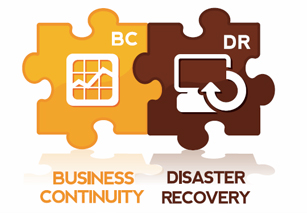
There comes a time when you are growing your business when you come to a specific problem or crossroads. Whether it involves hiring staff, looking for a new office, or maybe putting aside budget for next quarters digital marketing spend.
Whatever the case, I like to call these “good problems” in business. When your business is growing, you will most certainly be faced with new challenges and obstacles that you have never encountered in the past.
Enter the case of business VoIP. I recently wrote about the 11 key benefits for switching to business VoIP for your telecommunication services. For those who did not read it, the 11 benefits are:
- Instantly save money
- Lower long distance costs
- Lower mobile usage
- HD voice quality
- Bring your own device (BYOD)
- Simple Network Infrastructure
- Web-based Management
- Lower TCO and Operating Costs
- No Maintenance Costs
- A business continuity Plan
- Quality & Reliability
- (Bonus) More Features
As you can see, the ‘why‘ is defined and you won’t have to search much to find more benefits or reasons why you should adapt to cloud-based voip phone solutions.
With the why in place, the question remains:
When is the best time to switch to business VoIP?
From my experience, there are company milestones and triggers that are perfect scenarios when switch to VoIP makes perfect sense.
1. Growing beyond your mobile phone (the “I work from my cell phone” scenario)
According to Wikipedia, there are more mobile devices that people in US. With that many mobile phones, is it no wonder that most entrepreneurs and startups start their business from their mobile phone? It doesn’t cost extra, no special hardware, and is readily available which is ideal for every new company.

What happens when your business is up and running with paying customers, how long can you go before you outgrow your mobile solution?
Main Phone Number
Running your business from your mobile phone, what is your company main line? I am guessing it is the same as your mobile number. If so, are you marketing that number on your website and other marketing material?
The time will come when you will be too busy to handle every single phone inquiry that your company receives and will eventually want to grow your team by hiring your first few employees. But what will you do? Will you call forward all your calls to their mobile device? Furthermore, will you expect them to give out their personal phone number to all your customers and suppliers?
At this point, you may want to start looking and sounding like a larger by at least getting a main business line and perhaps a toll-free number. But rather than going to the traditional “ma-bell “carriers, you should take a look at the virtual PBX providers who can also give a digital receptionist that plays a custom greeting when someone calls your number.
2. Growing beyond basic phone service (the “I need to get my business in check” scenario)
Similar to scenario 1, many business owners who have a brick and mortar office typically start with at least 1 single business line and a fax service. If they have more staff on-site, they may have multiple lines connected to a number of basic telephone handsets.

Just like the previous scenario, problems start to occur when things get busy, specifically with more inbound calls, the only difference being that everyone is sitting at the same place. Some pain points that you may relate to are:
- The inability to transfer calls
- “Hey Joe, there is a call for you on line 2”
- No Digital Receptionist or IVR Menu system
- All calls must be answered by a live person
- No employee/extensions orvoicemails
- Everyone shares the same lines and handsets
- Unprofessional
- Difficult to get the right person or information
These are all good problems because the phone is ringing! Not sure about everyone, but the sound of a ringing phone means sales opportunities.
Typically, this is the first time a business owner will think and look for a PBX phone system. Business is crazy busy and they want to streamline their operations and sound professional by adding a digital receptionist, IVR menu, and extensions for employees.
3. Growing beyond current office space (the “we need a new home” scenario)
A great time to look at new phone system is when it is time to look for a new office because your current office is too small. This is the fun scenario! Who doesn’t love shopping for a new home?
When moving and relocating, there are many things that you need to think of other than the phone system.

This list is not complete, but top of mind items:
- Communication plan to let customers know
- Plan new office layout along with new color
- Organize the logistics of the move
- Install new IT networking
- Packing supplies and boxes
- Contact all providers
- And so on…
Aside from the exhaustive list, your telecommunications should be up there as well. During a move, you need to understand that downtime is inevitable if you are moving your existing phone system. The logistics are as follows:
- Contact telephone provider to let them know of move date and when to transfer lines
- Move telephone equipment either day before or day of move date
- Install and test equipment and new location
Through all this, you will have at least 1 business day of downtime. Along with that, you will hope that your equipment is not damaged during the move and your settings remain intact. More often than not, it is a straightforward move, and things go well.
Having said that, given the fact that you are incurring capital cost, this is the perfect opportunity to look at cloud-based business VoIP system. You can have your new phone system up and running well before the move date, have the numbers forwarded right before the move, and you will not have any downtime. Your customer will never know that you are moving.
Evaluating the cost of moving the existing phone system, the current telecom costs, and the constraints on how many extensions the. More often than not, when you do the math, it makes sense to switch to business VoIP.
4. Growing beyond current phone solution (the “why did we buy this phone system” scenario)
Growing beyond your current phone system is closely related to our last scenario. As you grow, and if your company owns and operates your own PBX phone system, there may come a time when you have hit maximum capacity of your current phone system. And when that time comes, adding an extra employee/extension will incur capital costs to upgrade the phone system to add a single extension.

Many of the traditional PBX phone systems have a fixed number of extensions, such as, 8, 12, 24, and 36 extensions. With that in mind, at the 9th, 13th, 25th, and 37th employee, you will have to plan and budget to upgrade your phone system, and depending on your solution, you may have to forklift the entire solution.
If you are reaching the most number of extensions on your current phone system, you will want to consider this an opportunity to move your telecommunications infrastructure to the cloud to end the ceiling provided by hardware solutions.
5. Growing beyond city boundaries (the “we are going national and expanding” scenario)

Yay, congratulations! You have a finely tuned business and growth is a matter of expanding presence by opening offices in different business centers and cities.
It is natural to expand quickly and just duplicate what you have done in your current office which makes total sense except for your telecom solution.
Let me ask you this, if you open a 2nd office in the other side of the country, do you deploy a 2nd email and web server?
Obviously not, why would you want the headache? Unfortunately, which is what happens with the phone solution. Stakeholders quickly expand and just quickly buy a traditional PBX phone system at every site.
By doing so, you are not only incurring a large capital cost, but you are also tying yourself to expensive business lines from “ma-bell”. It doesn’t stop there, along with separate and isolated systems, calling between offices may incur long distance calls.
With a cloud-based business phone solution, you are able to grow, share infrastructure, and manage the solution and service from any site.
6. Growth through lowering operations costs (the “things are going great, except for these high bills” scenario”)

When your business is humming like a fine tuned engine, you have marketing feeding sales, orders being fulfilled, and employees are happy. At this time, you’re CFO is looking for creative ways to make money by saving money. He may turn to his CTO and ask her to look at existing infrastructure costs and they both realize their monthly bills are outrageous.
Going through the exercise to forklift an existing system that has been fully paid, and is not costing the company any money, can be exhaustive and a challenge especially if you have to create a business plan to raise money for this capital project.
But looking closely at the numbers and realizing that a business VoIP provider can not only lower monthly recurring costs by 30% with an ROI of less than 2 years, it could make sense and make you look good in front of your peers and the board.
7. Business Continuity Planning Disaster recovery (the “things are going great, unless this happens” scenario)

Last but not certainly least, is the business continuity plan (DCP) and disaster recovery scenario. When you are at this point, you are thinking of the lost revenue when things are not going so great. Putting together this plan and analyzing the cost of moving to business VoIP versus the lost revenue of a telecom outage for X days, it may make total sense to switch today.
As I mentioned before, business VoIP has benefits that outweigh not being with VoIP but typically, you don’t just wake up one day and say “I’m going to switch to business VoIP today”.

